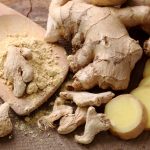Tuesday, December 04, 2018 by RJ Jhonson
Helicteres angustifolia is popularly used in China as a herbal treatment for diseases like cancer, bacterial infections, inflammation, and flu, but no report of its antidiabetic activity has been published. A study published in Pharmaceutical Biology investigated the anti-diabetic activity of its ethanolic root extract.
- Using HepG2 cell, differentiated C2C12 myotubes, and differentiated 3T3-L1 adipocytes, the researchers tested the ability of H. angustifolia root ethanol extract, in dosages of 25, 50, and 100 mcg/mL, to promote glucose uptake.
- The extract’s antidiabetic activity was evaluated in vivo using a mouse model with STZ-induced diabetes. The extract was orally administrated at a dosage of 200 and 400 mg/kg b.w. once daily for 28 days.
- Other factors, such as blood glucose, insulin, total glycerides (TG), total cholesterol (TC), total proteins (TP), HDL cholesterol (HDL-C), uric acid (UA), urea nitrogen (UN), aspartate transaminase (AST), blood urea nitrogen (BUN), and alanine transaminase (ALT), were also taken into account. Insulin resistance was gauged using the Homeostasis Model Assessment of Insulin Resistance (HOMA-IR).
- The extract promoted glucose uptake in HepG2 cells, C2C12 myotubes, and 3T3-L1 adipocytes. At the end of the treatment, significant reductions in blood glucose levels, as well as HOMA-IR, TC, TG, UA, BUN, AST, and ALT levels, were observed. TP and HDL increased.
These findings convinced the researchers that H. angustifolia has powerful anti-diabetic effects.
Learn to control and manage diabetes at DiabetesScienceNews.com.
Journal Reference:
Hu X, Cheng D, Zhang Z. ANTIDIABETIC ACTIVITY OF HELICTERES ANGUSTIFOLIA ROOT. Pharmaceutical Biology. 11 February 2016;54(16):938-344. DOI: 10.3109/13880209.2015.1077871








